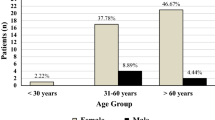The yeasts Cryptococcus albidus (Naganishia albida) usually occur on natural substrates and rarely are the etiological factor of different mycoses. More than a half of mycosis cases described in the literature were reported during the period from 2004 to 2021. In this regard, evaluation of yeast sensitivity to antimycotic drugs is as important as their identification. In the present study, two yeast isolates from the skin of female patients (age 7 and 74 years) with infective dermatitis (ICD-10-CM Code L30.3) were studied. Common identification of the isolates, MALDI-TOF mass spectrometry, and analysis of the nucleotide sequences of the ITS1-5.8S-ITS2 rDNA region showed that they belong to the species N. albida. The sensitivity of the obtained strains to antimycotics of three different chemical groups, namely itraconazole, naftifine, and amphotericin B, determined by microdilution method in a synthetic medium showed the following minimum inhibitory concentrations: 64-128, 16, and 0.125-4 μg/ml, respectively. It was found that the sensitivity of this yeast to pooled human serum was 30-47%, i.e. lower by 1.9-2.9 times than the sensitivity of the collection strains of C. albicans and C. neoformans. This result could be explained by lower prevalence of N. albida in the human population in comparison with these species. However, the sensitivity of N. albida strains to the low-molecular-weight fraction of serum was approximately the same as in C. albicans and C. neoformans, which indicates their high sensitivity to antimicrobial peptides.
Similar content being viewed by others
References
Aghaei Gharehbolagh S, Nasimi M, Agha Kuchak Afshari S, Ghasemi Z, Rezaie S. First case of superficial infection due to Naganishia albida (formerly Cryptococcus albidus) in Iran: A review of the literature. Curr. Med. Mycol. 2017;3(2):33-37. doi: https://doi.org/10.18869/acadpub.cmm.3.2.33
Arzumanian VG. Minimal inhibiting concentrations of some antifungals against clinical basidiomycete yeasts. Antibiot. Khimioter. 2002;(2):7-10. Russian.
Barnett JA, Payne RW, Yarrow D. Yeasts: Characteristics and Identification. Cambridge, 2000.
Liu XZ, Wang QM, Göker M, Groenewald M, Kachalkin AV, Lumbsch HT, Millanes AM, Wedin M, Yurkov AM, Boekhout T, Bai FY. Towards an integrated phylogenetic classification of the Tremellomycetes. Stud. Mycol. 2015;81:85-147. doi: https://doi.org/10.1016/j.simyco.2015.12.001
Arzumanian V, Erofeeva T, Ixanova A, Zhigalkina P, Svitich O. Activity of antimicrobial peptide fractions of human serum and saliva against clinically important yeasts. Curr. Top. Peptide Protein Res. 2019;20:9-15. doi: https://doi.org/10.31300/CTPPR.20.2019.9-15
Liu XZ, Wang QM, Theelen B, Groenewald M, Bai FY, Boekhout T. Phylogeny of tremellomycetous yeasts and related dimorphic and filamentous basidiomycetes reconstructed from multiple gene sequence analyses. Stud. Mycol. 2015;81(1):1-26. doi: https://doi.org/10.1016/j.simyco.2015.08.001
Tamura K, Stecher G, Peterson D, Filipski A, Kumar S. MEGA6: Molecular Evolutionary Genetics Analysis version 6.0. Mol. Biol. Evol. 2013;30(12):2725-2729. doi: https://doi.org/10.1093/molbev/mst197
Katoh K, Rozewicki J, Yamada KD. MAFFT online service: multiple sequence alignment, interactive sequence choice and visualization. Brief. Bioinform. 2019;20(4):1160-1166. doi: https://doi.org/10.1093/bib/bbx108
Vu D, Groenewald M, Szöke S, Cardinali G, Eberhardt U, Stielow B, de Vries M, Verkleij GJ, Crous PW, Boekhout T, Robert V. DNA barcoding analysis of more than 9 000 yeast isolates contributes to quantitative thresholds for yeast species and genera delimitation. Stud. Mycol. 2016;85:91-105. doi: https://doi.org/10.1016/j.simyco.2016.11.007
Schwartz JR. Zinc pyrithione: a topical antimicrobial with complex pharmaceutics. J. Drugs Dermatol. 2016;15(2):140-144.
Cavassin FB, Baú-Carneiro JL, Vilas-Boas RR, Queiroz-Telles F. Sixty years of Amphotericin B: an overview of the main antifungal agent used to treat invasive fungal infections. Infect. Dis. Ther. 2021;10(1):115-147. doi: https://doi.org/10.1007/s40121-020-00382-7
Datta K, Jain N, Sethi S, Rattan A, Casadevall A, Banerjee U. Fluconazole and itraconazole susceptibility of clinical isolates of Cryptococcus neoformans at a tertiary care centre in India: a need for care. J. Antimicrob. Chemother. 2003;52(4):683-686. doi: https://doi.org/10.1093/jac/dkg399
Gupta AK, Ryder JE, Cooper EA. Naftifine: a review. J. Cutan. Med. Surg. 2008;12(2):51-58. doi: https://doi.org/10.2310/7750.2008.06009
de Aquino Lemos J, Costa CR, de Araújo CR, Souza LK, Silva Mdo R. Susceptibility testing of Candida albicans isolated from oropharyngeal mucosa of HIV(+) patients to fluconazole, amphotericin B and Caspofungin. killing kinetics of caspofungin and amphotericin B against fluconazole resistant and susceptible isolates. Braz. J. Microbiol. 2009;40(1):163-169. doi: https://doi.org/10.1590/S1517-838220090001000028
Arzumanyan VG, Ozhovan IM. Modified method for evaluation of plasma membrane integrity in eukaryotic cell. Bull. Exp. Biol. Med. 2002;134(1):103-105. doi: https://doi.org/10.1023/A:1020641629319
Author information
Authors and Affiliations
Corresponding author
Additional information
Translated from Byulleten’ Eksperimental’noi Biologii i Meditsiny, Vol. 174, No. 11, pp. 572-579, November, 2022
Rights and permissions
Springer Nature or its licensor (e.g. a society or other partner) holds exclusive rights to this article under a publishing agreement with the author(s) or other rightsholder(s); author self-archiving of the accepted manuscript version of this article is solely governed by the terms of such publishing agreement and applicable law.
About this article
Cite this article
Arzumanyan, V.G., Ozhovan, I.M., Kachalkin, A.V. et al. Detection of Naganishia albida Yeasts in Dermatological Patients. Bull Exp Biol Med 174, 616–622 (2023). https://doi.org/10.1007/s10517-023-05757-7
Received:
Published:
Issue Date:
DOI: https://doi.org/10.1007/s10517-023-05757-7




